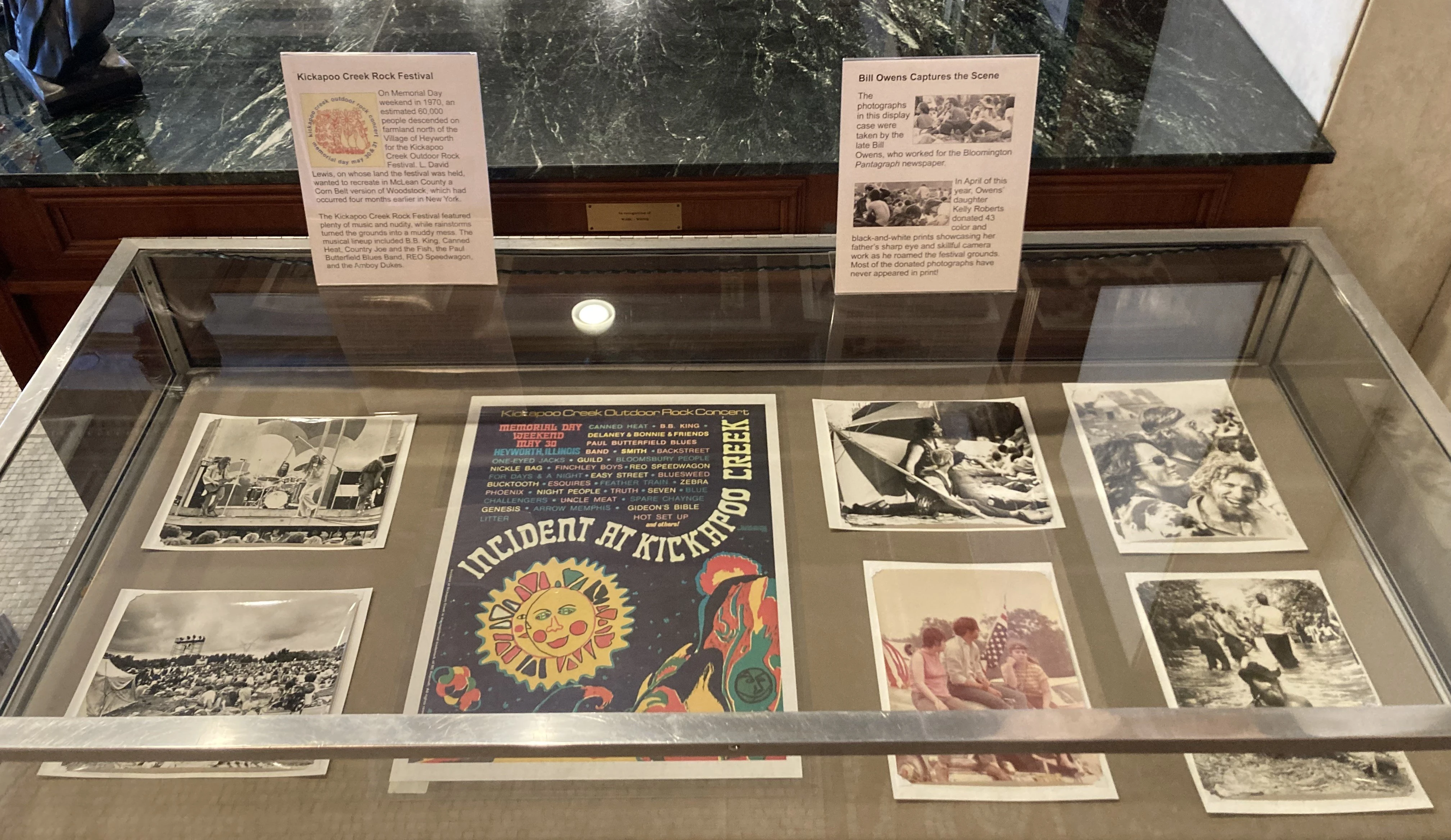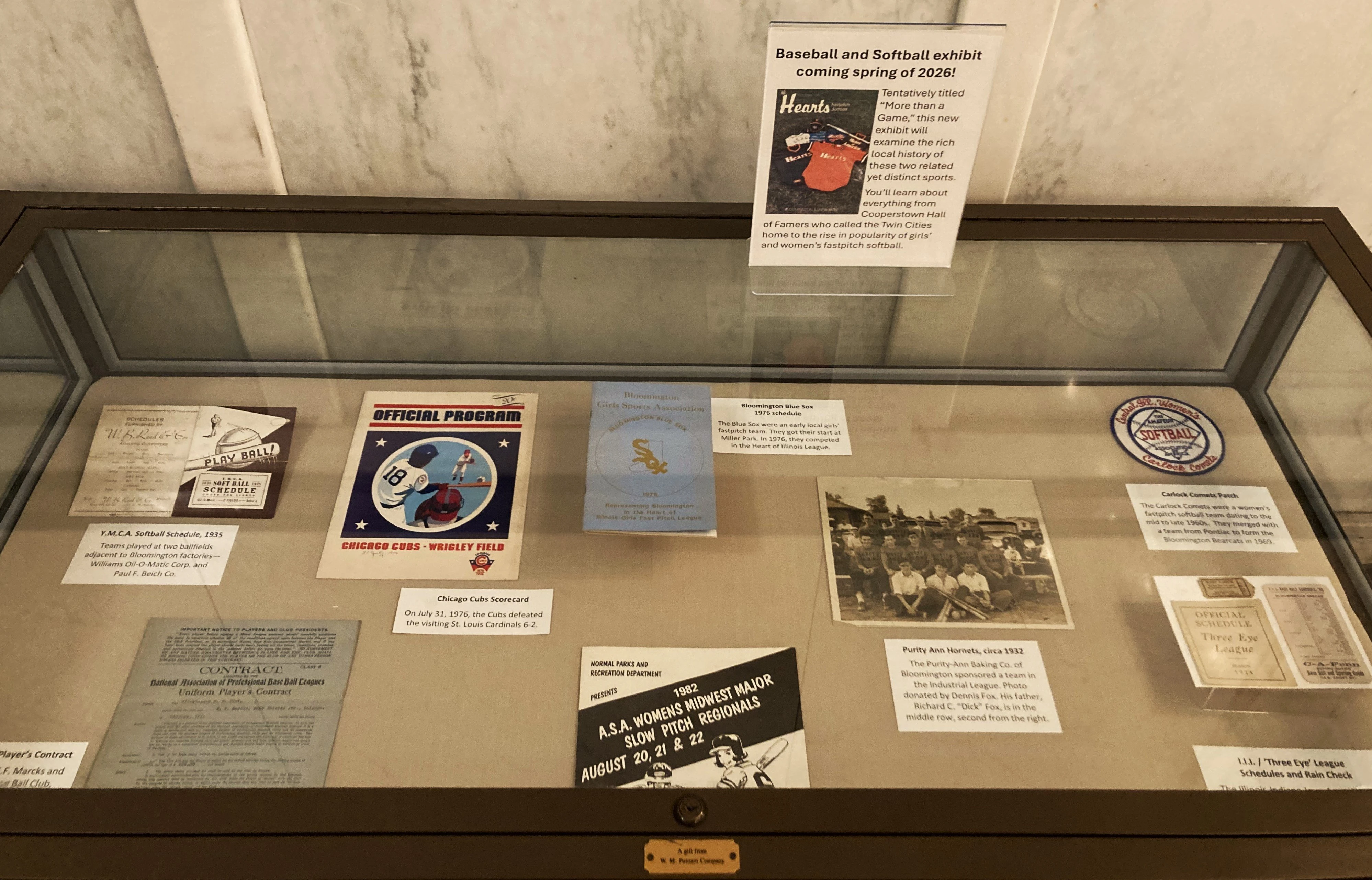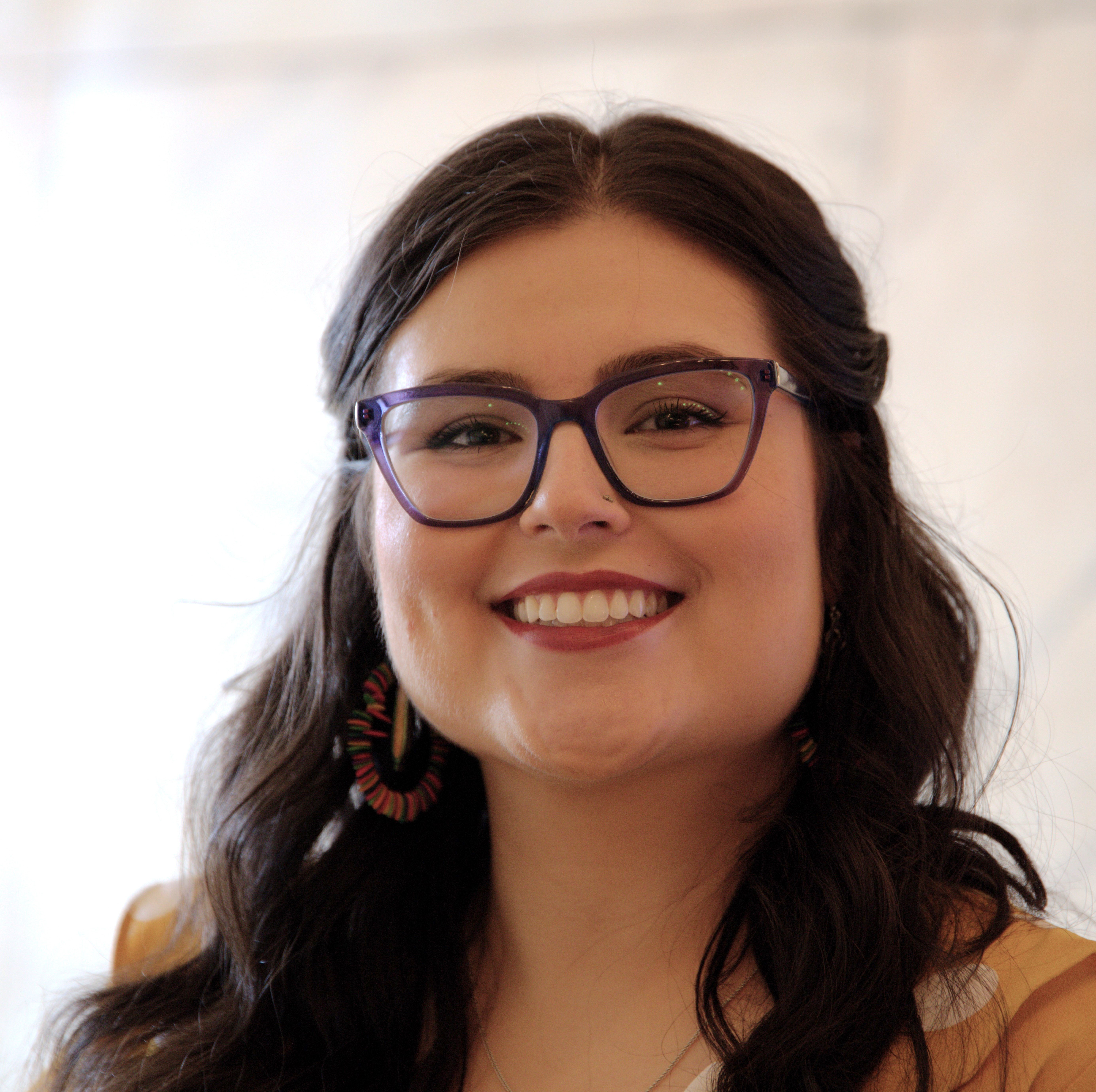Staff, volunteers, and interns regularly rotate archival materials in three of the four display cases outside of the Library, located on the second floor of the Museum. The latest curation highlights a recent donation of photos from the 1970 Kickapoo Rock Festival, a myriad of baseball-related materials, and our interns' impact on the institution.
On Memorial Day weekend in 1970, an estimated 60,000 people descended on farmland north of the Village of Heyworth for the Kickapoo Creek Outdoor Rock Festival. L. David Lewis, on whose land hosted the festival, wanted to recreate a Corn Belt version of Woodstock, which had occurred four months earlier in New York. The Kickapoo Creek Rock Festival featured plenty of music and nudity, while rainstorms turned the grounds into a muddy mess. The musical lineup included B.B. King, Canned Heat, Country Joe and the Fish, the Paul Butterfield Blues Band, REO Speedwagon, and the Amboy Dukes.
The late Bill Owens, who worked for the Bloomington Pantagraph newspaper, took the photographs in this display case. In April of this year, Owens' daughter, Kelly Roberts, donated 43 color and black-and-white prints showcasing her father's sharp eye and skillful camera work as he roamed the festival grounds. Most of the donated photographs have never appeared in print!
We plan to swap out the photos every two weeks to share more of this incredible donation with the community. We will also rotate out the groovy poster to preserve it, and share other neat archival materials from the festival, such as some of the original ticket order forms.
The other two display cases in the hallway might not be as "rockin'" but aptly highlight the significant work two Library & Archives interns contributed this semester.
The display case of the east side of the hallway features a selection of items encapsulated by intern Frankie Gordey this spring. Encapsulation protects items in acid-free archival plastic, which prevents tearing or cracking. Encapsulation is not to be confused with heat-sealing lamination, which damages paper by sealing it in harmful, acidic microclimates. By contrast, encapsulation lets paper "breathe," which, when coupled with storage in climate-controlled environments, can significantly extend the life of delicate paper items. Frankie diligently encapsulated over a dozen archival items during his internship, in addition to organizing and inventorying other archival collections, such as the McLean County Health Department. Frankie is completing a master's degree in library science through the University of North Texas, though he makes his home in the Twin Cities.
On the west side of the hallway is a baseball-themed display curated by intern Mike Zenke, who just completed his degree in library sciences from Dominican University. Mike spent most of his internship organizing, archiving, and researching items for our upcoming exhibit exploring local baseball and softball history. This rotating display case highlights images, print materials, and even an original patch, which illuminates the rich history of America's favorite pastime, right here in our own backyard.
Both intern-curated displays are tangible examples of the impact of hands-on learning experiences, which are mutually beneficial for the Museum, the students, and the people we serve.
As an independent 501(c)3 nonprofit, we rely on the support of interns like Mike and Frankie, volunteers like Jo Mink (who helped Bill curate the Kickapoo Festival case), and members whose support helps make it all possible.
To learn more about supporting the Museum's mission, click here.
To learn more about interning or volunteering at the Museum, click here.





